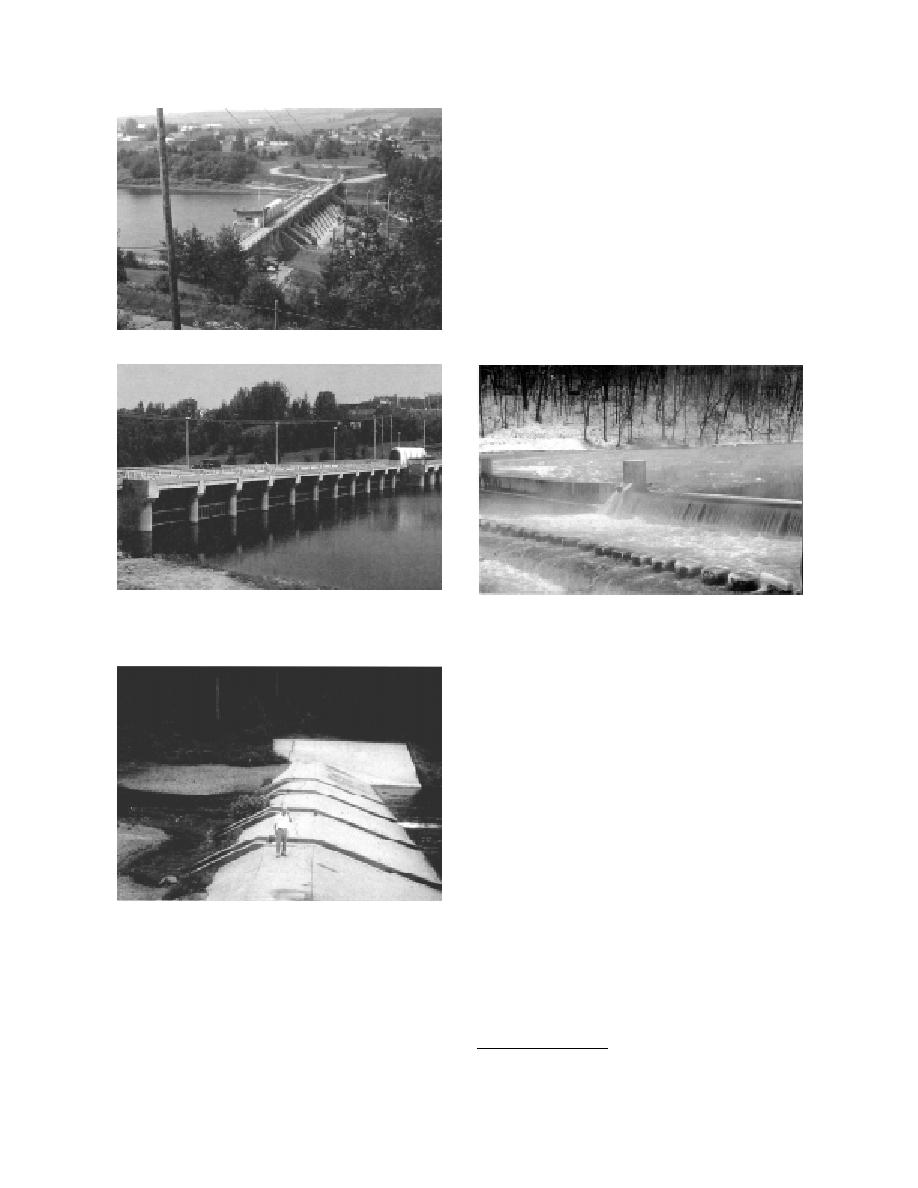
in relatively good repair. The weir has experi-
enced minor settlement, and gravel deposits up-
stream are beginning to limit the pool depth. At
present the New England Division of the Corps
of Engineers would like to transfer ownership of
the structure to the town. Since the town is not
interested, the structure will most likely be re-
moved in the near future.*
The 306-ft-wide gated concrete weir, shown in
Figure 12, creates a 5-ft-deep pool to trap frazil
on Oil Creek in Pennsylvania. The weir is part of
the solution to Oil Creek's historically severe ice
jam problem. Initially a boom was seasonally
a. Downstream side.
Figure 12. Ice control weir on Oil Creek, upstream of
b. Upstream side, showing the ice retention grates.
Oil City, Pennsylvania.
Figure 10. Ice control dam on the Chaudiere River at
St. Georges, Quebec.
installed upstream of the weir until it was found
that an ice cover formed behind the weir without
the boom in place. Although not the original de-
sign intent, the Oil City weir affords some degree
of breakup protection by delaying movement of
the upstream ice until the downstream ice has
had a chance to clear out (Gooch, in prep., Gooch
and Daly, in prep.).
As an example of the effectiveness of a system
of dams in ice control, the upper Mississippi
above St. Louis contributes little or no ice to the
severe ice jam problems in the undammed mid-
dle Mississippi, between St. Louis and Cairo,
Illinois. Most of the problem ice originates in the
Figure 11. Ice control weir on the Israel River, Lan-
Missouri River, undammed for 800 miles above
caster, New Hampshire, July 1994.
its confluence with the Mississippi, or from ice
generated in middle Mississippi itself. In addi-
provided the town of Lancaster, New Hamp-
tion, many of the ice control measures, existing or
shire, some ice jam relief by reducing the frazil
proposed, are in response to the removal or
quantities historically deposited downstream of
decay of existing dams across the northern
town. Although designed to retain frazil, the
weir to some degree acts as a barrier to breakup
ice, as shown in Figure 11 (Perham 1983, Axel-
* Personal communication with Scott Acone, New England
son 1991). A site visit in July 1994 found the weir
Division of the Corps of Engineers.
11



 Previous Page
Previous Page
